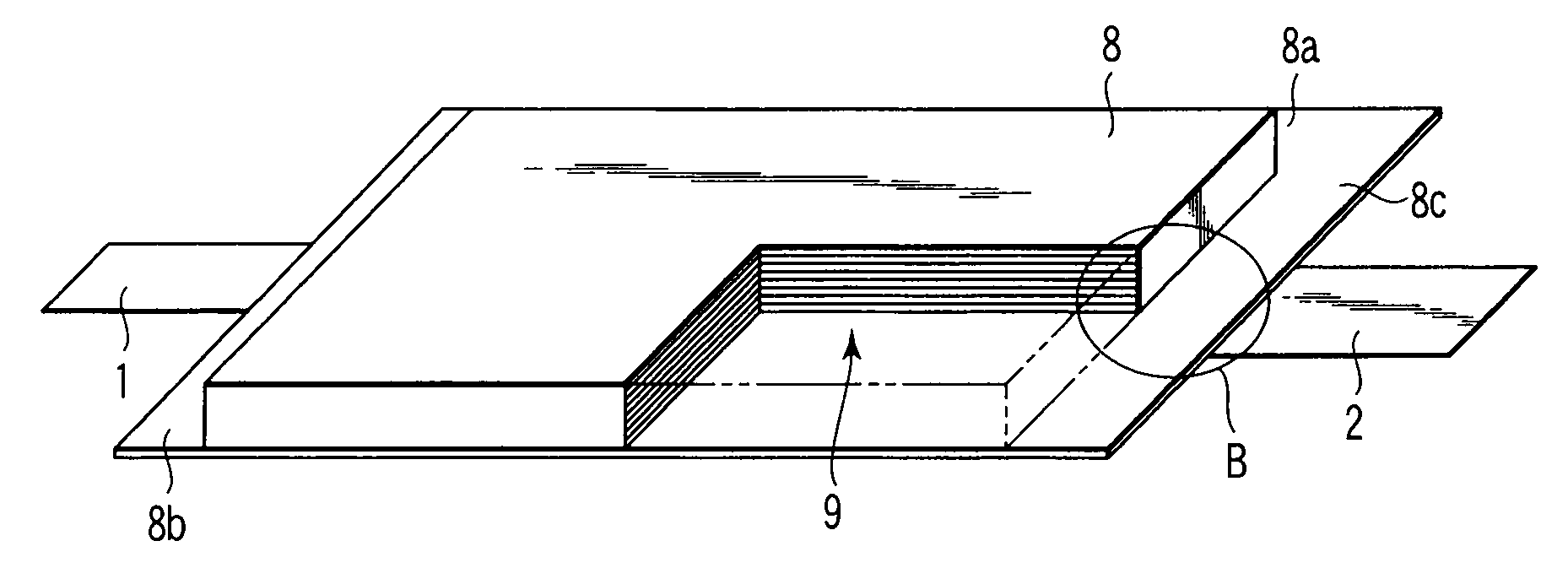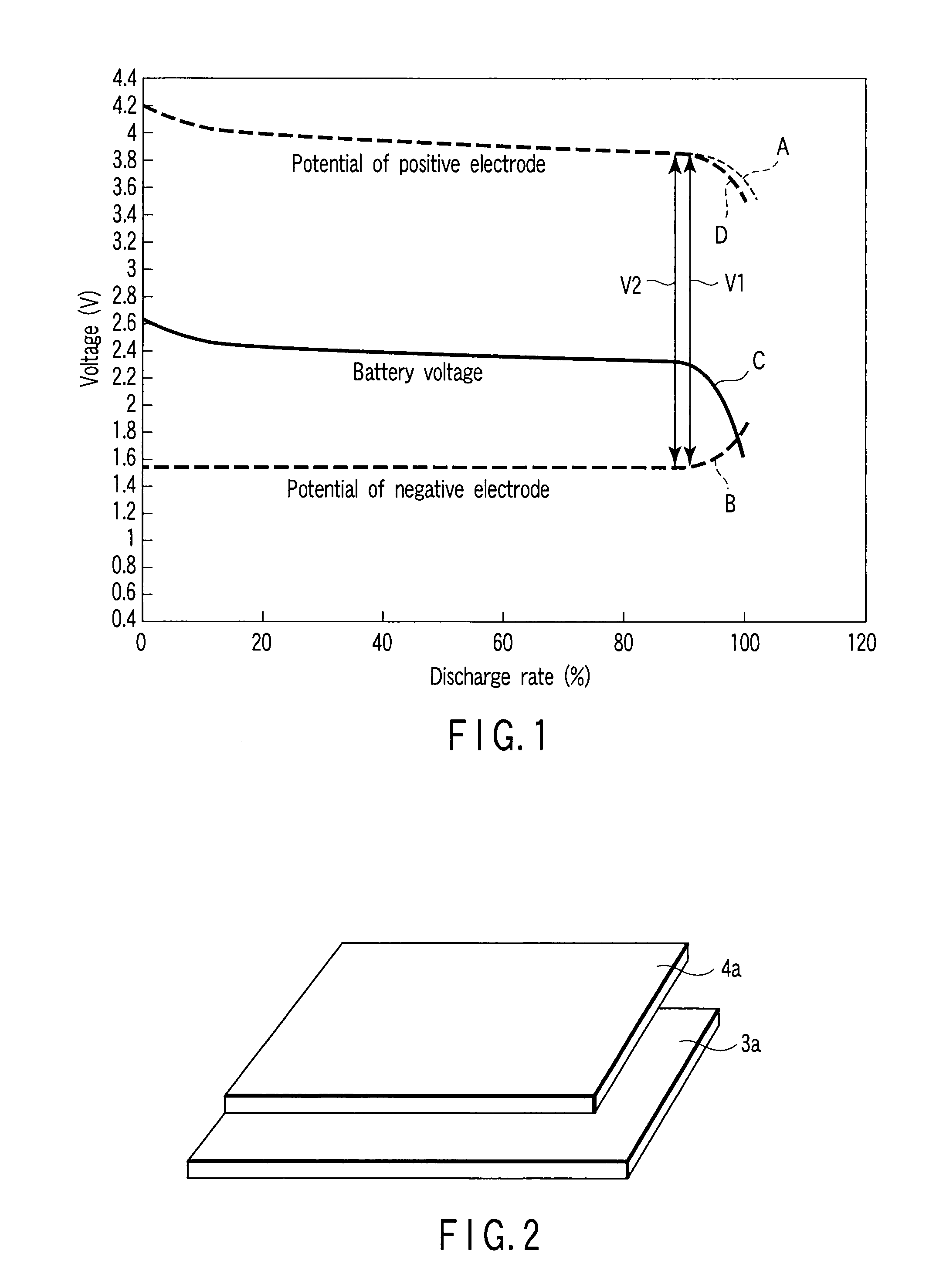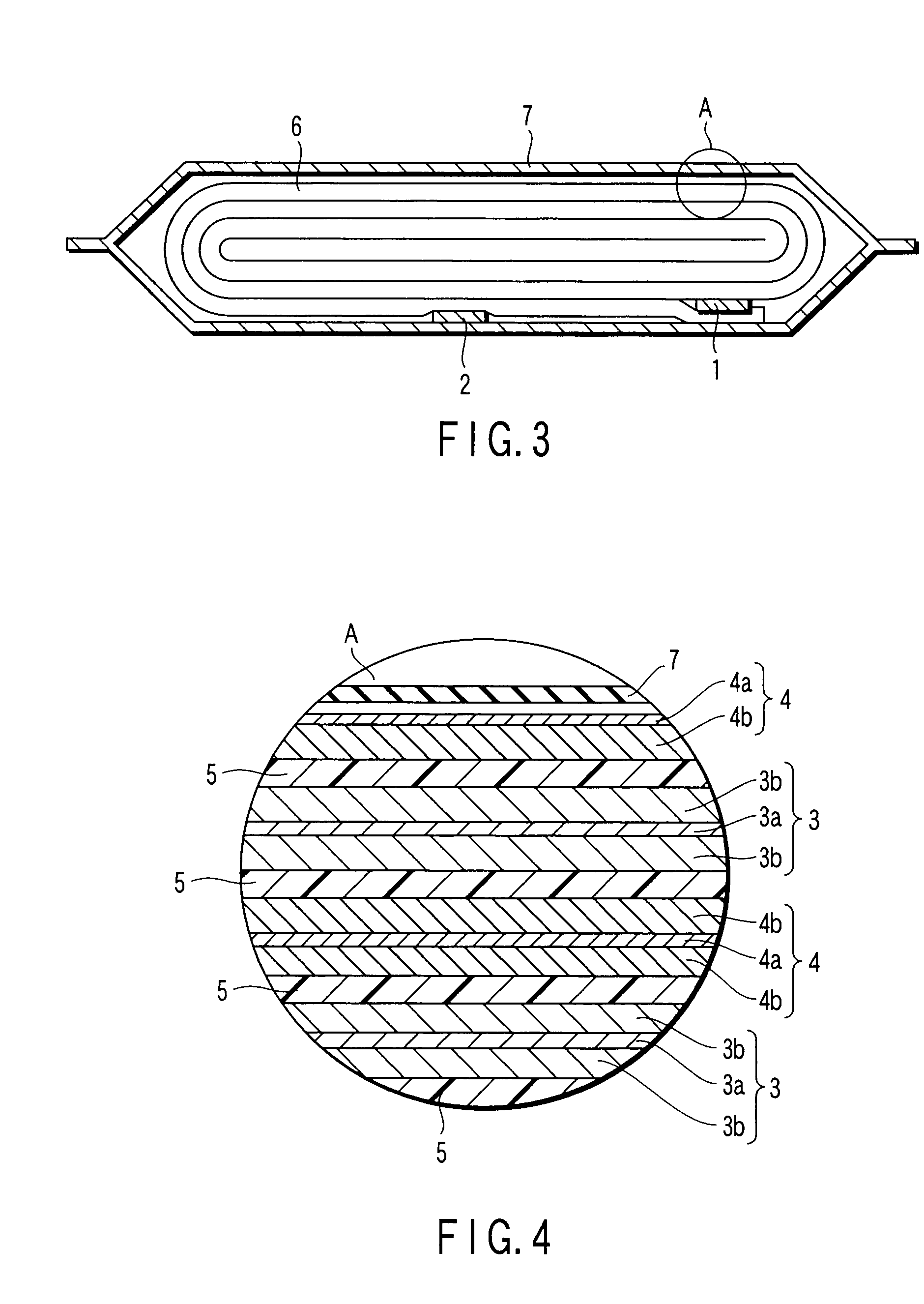Nonaqueous electrolyte battery, battery pack and vehicle
a technology of nonaqueous electrolyte and battery pack, which is applied in the direction of batteries, non-aqueous electrolyte cells, hybrid vehicles, etc., can solve the problems of nonaqueous electrolyte batteries having protective circuits and reducing discharge capacity, and achieves improved corrosion resistance, enhanced strength, and higher strength
- Summary
- Abstract
- Description
- Claims
- Application Information
AI Technical Summary
Benefits of technology
Problems solved by technology
Method used
Image
Examples
first embodiment
[0037]The inventors of the invention have found, through intensive studies, that the high temperature performance may be improved by permitting a nonaqueous electrolyte battery using a negative electrode active material having a lithium ion absorption potential of 0.4 V (vs. Li / Li+) or more to have the configurations (1) and (2):
[0038](1) both the positive electrode current collector and negative electrode current collector are formed of aluminum or an aluminum alloy; and
[0039](2) the total area and specific capacitance of the positive electrode current collector are made to be larger than those of the negative electrode current collector.
[0040]Specifically, the invention provides a nonaqueous electrolyte battery being excellent in charge-discharge cycle performance under a high temperature environment and being able to obtain a high capacity recovery rate when kept under the above-mentioned condition.
[0041]FIG. 1 shows a discharge voltage curve of the nonaqueous electrolyte battery...
second embodiment
[0123]The battery pack according to the second embodiment comprises the nonaqueous electrolyte battery according to the first embodiment as unit cell. A plurality of the unit cells may be used. The unit cells are electrically connected in series or parallel to form an assembled battery.
[0124]The unit cell according to the first embodiment is suitable for use as the assembled battery, while the battery pack according to the second embodiment is excellent in charge / discharge cycle performance under high temperature environments. These features will be described below.
[0125]Since the nonaqueous electrolyte battery according to the first embodiment is excellent in charge / discharge cycle performance under high temperatures, any irregularity of charge / discharge cycle performance among the unit cells can be largely suppressed. Accordingly, the battery pack according to the second embodiment can improve the charge / discharge cycle performance at high temperatures. Since battery voltage chang...
third embodiment
[0138]The vehicle according to the third embodiment comprises the battery pack according to the second embodiment. A large current of about 10 C usually flows in vehicle-mounted battery packs. Since the unit cell of the first embodiment can suppress deterioration due to overdischarge of the positive electrode at a large current discharge, it is also excellent in charge / discharge cycle performance under a large current. Further, since any irregularity of the charge / discharge cycle life among the unit cells can be reduced, the battery pack according to the second embodiment is excellent in cycle performance under a large current. Accordingly, the vehicle according to the third embodiment is excellent in performance of driving source. The vehicle as used herein includes two- to four-wheel hybrid electric cars, from two- to four-wheel electric cars, and motor-assisted bicycles.
[0139]FIGS. 11 to 13 show various type of hybrid vehicles in which an internal combustion engine and a motor dr...
PUM
 Login to View More
Login to View More Abstract
Description
Claims
Application Information
 Login to View More
Login to View More - R&D
- Intellectual Property
- Life Sciences
- Materials
- Tech Scout
- Unparalleled Data Quality
- Higher Quality Content
- 60% Fewer Hallucinations
Browse by: Latest US Patents, China's latest patents, Technical Efficacy Thesaurus, Application Domain, Technology Topic, Popular Technical Reports.
© 2025 PatSnap. All rights reserved.Legal|Privacy policy|Modern Slavery Act Transparency Statement|Sitemap|About US| Contact US: help@patsnap.com



